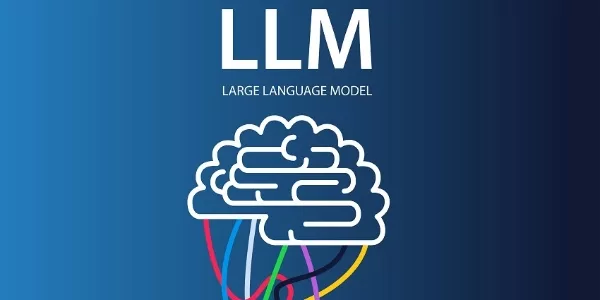Insights
How Generative AI for Market Research Changes Your Business
On Digitals
14/08/2025
12
The world of marketing is evolving at a breakneck pace, and staying ahead of the curve means embracing new technologies. For many marketers, the secret to unlocking deeper customer insights and streamlining workflows lies in the power of generative AI. This blog post will explore how generative AI for market research is not just a buzzword, but a practical tool that can help your business make smarter, faster, and more creative decisions than ever before.
Why is Generative AI for Market Research a Game-Changer for Modern Marketers?
Why are so many people excited about generative AI for market research? The simple answer is that it fundamentally changes how we approach our work. It’s not just about crunching numbers anymore. Think of it as having a super-smart creative partner who never gets tired and can process information at lightning speed.
A Shift from Analysis to Augmentation
Traditionally, market research has been about analyzing existing data to find patterns and trends. We’d look at survey results, sales figures, and focus group transcripts to figure out what happened.
But with generative AI, the focus shifts to augmentation. This technology acts as a creative partner, helping you brainstorm new ideas, draft reports, and even create content. It helps you fill in the insight gaps that intuition used to handle, providing evidence for decisions that were once based on guesswork.

Why is generative AI taking over market research?
The Magic of Synthetic Data
One of the most powerful aspects of using generative AI for market research is its ability to create synthetic data. This is like a realistic dataset that mimics the characteristics of real information. If you’re missing a key piece of information or want to test a new idea without the time and cost of a large-scale study, generative AI can generate this data for you.
This allows your team to test new hypotheses, explore “what-if” scenarios, and make data-driven decisions even when real-world data is scarce.
How Can Your Team Use Generative AI for Market Research?
One of the most compelling applications of generative AI for market research is how it deepens your understanding of your customers and accelerates the creative process.
Understanding Your Customers at a Deeper Level
When you’ve got thousands of customer reviews, interview transcripts, and social media comments sitting in folders somewhere, you’d need to read through every single one (or pay someone else to do it) but it’s a monotonous and taxing job.
However, generative AI can tear through all that content in minutes, pulling out the key themes, sentiments, and pain points. Suddenly, you’re not spending weeks trying to find patterns, you’re spending your time actually doing something with those insights, maybe analyzing and coming up with conclusions.
Take Bayer, for example. They used AI to analyze Google Trends data to try and predict flu outbreaks, then adjusted their marketing messages accordingly. Thanks to that, they manage to pull off an 85% boost in click-through rates and 2.6x more website traffic, not too shabby.

How businesses use LLMs like ChatGPT for market research
Accelerating the Creative Process
Need 20 different headline ideas for a campaign? That used to take hours of brainstorming sessions with your team. Now? Ask AI, and you’ll have options in minutes. While the brainstorming session is still very much needed, you now have a whole lot of ideas to bounce off of each other.
Creating personalized content for different audience segments used to be a massive pain. Now, generative AI for market research makes it simple. Feed it some customer insights, and it’ll pump out tailored email subject lines, ad copy, and social media posts that actually speak to specific groups. That said, you also need to brush up on your prompting skills to make it happen.
What Are the Key Benefits of Adopting Generative AI for Market Research?
Faster, More Actionable Insights
Speed is everything in today’s fast-paced market. Generative AI allows for real-time market sensing by processing vast amounts of data much faster than any human team could. This means you can spot emerging trends, react to changes in consumer sentiment, and make data-driven decisions almost instantly.
The insights you gain from using generative AI for market research are not only faster but also more actionable, as the AI can help you connect the dots between different data points to create a clear picture. According to McKinsey research, companies that use AI-driven marketing strategies can see a 15-30% enhancement in their overall marketing performance.
Reducing Costs and Time
Market research can be an expensive and time-consuming process. Automating repetitive tasks, like sifting through qualitative data or drafting initial reports, with generative AI for market research frees up your team’s most valuable asset.
For instance, Ma’aden and MAIRE have reported saving thousands of work hours per month by using tools like Microsoft 365 Copilot to automate routine tasks. Similarly, McKinsey found that using gen AI can accelerate product time to market by about 5% and improve product manager productivity by 40%.
Filling in the Blanks
Sometimes, you simply don’t have all the data you need to make a confident decision. This is where the synthetic data capabilities of generative AI really shine. By generating realistic data to fill gaps in your existing datasets, you can explore “what-if” scenarios, test hypotheses, and predict trends that were previously impossible to model.
This ability to overcome data limitations is a massive advantage when doing market research, allowing you to consider more possibilities and make informed decisions based on them.

The technology comes with plenty of benefits and challenges
What are the Risks and Challenges of Using Generative AI for Market Research?
The Problem with Bias and “Hallucinations”
One of the most significant challenges is the potential for bias and something known as “hallucinations.” This is a pain, because AI models are only as good as the data they are trained on, and if that data contains biases, the AI’s output will reflect them.
Additionally, generative AI can sometimes “hallucinate,” or generate information that sounds plausible but is factually incorrect, which is something that may come with the use of synthetic data.
For example, a legal research tool might hallucinate a court case that doesn’t exist. To mitigate this, a “human-in-the-loop” approach is essential. Your team must be involved in validating AI-generated outputs to ensure they are accurate and free from harmful biases.
Navigating Data Privacy and Security
Using generative AI for market research often involves working with sensitive customer data. This raises important questions about data privacy and security while instilling fear in users when they give out personal information.
You need to have clear governance frameworks and policies in place to ensure that customer information is protected. On top of that, communicating to them how you are going to use their data is key. It’s crucial to understand how the AI models you use handle data and to be transparent with your customers about how their information is being used.
The Importance of Human Expertise
Finally, it’s vital to remember that generative AI is a tool, not a replacement for human expertise. It’s designed to augment, not to replace, the critical thinking, creativity, and strategic insight of experienced marketers. A McKinsey report on responsible AI principles emphasizes the need for human oversight and a “human-centric” design. The best results come from a collaborative process where the AI handles the heavy lifting of data processing, and humans provide the context, creativity, and strategic direction to turn that data into real business value.
How Can Your Business Get Started with Generative AI for Market Research?
Start Small with a Pilot Project
The best way to begin is by choosing a low-risk, high-impact use case. This could be something like using generative AI to analyze customer feedback from a single product launch or summarizing a set of interviews. Based on how this works out in the end, our team can get comfortable with the technology, learn its capabilities, and understand its limitations without disrupting core business operations.
Build an Ethical Framework
From your findings in the first time, you can start to weave generative AI into your operation gradually, with clear policies around its use. This ethical framework should address data usage, the need for transparency with customers, and the importance of a human-in-the-loop approach to ensure that the insights are valid and unbiased.
A strong framework should be accurate and reliable, accountable and transparent, fair and human-centric, and secure and resilient. Establishing these guidelines from the beginning will build trust both internally and with your customers.

The Deep Research function is bound to change the game (Source: OpenAI)
Invest in Continuous Learning
The field of AI is evolving incredibly fast. For context, ChatGPT came out in late 2022, and just over 2 years later, AI is dominating the field. To stay ahead, your business should foster a culture of continuous learning and experimentation. Encourage your team to explore new tools, attend workshops, and share their findings. This ongoing education is crucial for staying competitive and ensuring your business is ready to adapt as the generative AI landscape changes.
Frequently Asked Questions about Generative AI for Market Research
How does generative AI differ from traditional AI in market research?
Traditional AI excels at data analysis, performing specific tasks based on predefined rules. It’s used for things like predictive modeling and fraud detection. Generative AI, on the other hand, is a subset of AI that focuses on creating new, original content and insights, such as synthetic data, written reports, or campaign ideas. It’s more of a creative assistant that augments human work.
Can generative AI replace a human market researcher?
No. Generative AI is a powerful tool to assist, that’s the keyword, human researchers, not to replace them. While it can automate tedious tasks like data summarization and report drafting, it lacks the critical thinking, ethical judgment, and creative insight of a human. Human expertise is necessary to validate AI outputs, provide strategic direction, and interpret nuanced customer behaviors.
What kind of data does generative AI use for market research?
Generative AI models are trained on vast datasets, which can include public data from the internet as well as proprietary data like customer reviews, survey responses, social media comments, and internal reports. It’s particularly effective at analyzing large volumes of unstructured data to identify hidden themes and sentiments that might be missed by traditional methods.
Additionally, you can gather your own data and hand them over to your generative AI models to help them in doing research.
How can I ensure the data generated by AI is accurate and unbiased?
The best thing to do is to keep an eye on things because you can never place full trust into what generative AI produces. Your team should always verify AI outputs, cross-referencing them with other sources and applying their own expertise. To mitigate bias, you must ensure that the training data used is diverse and representative. Continuous monitoring, auditing, and building a strong ethical framework around data usage are all crucial steps.
What are some of the most common tools for generative AI in market research?
Many platforms and tools now incorporate generative AI. General-purpose tools like ChatGPT and Perplexity AI can be used for brainstorming and quick analysis. There are also more specialized tools designed for market research, such as Brandwatch for social listening, Quantilope for automated consumer insights, and Crayon for competitive intelligence. Other useful tools include Browse AI for data scraping, Speak AI for audio/video transcription and analysis, and Canvs AI for measuring emotions in text.
Learn More About Generative AI for Market Research
Generative AI for market research isn’t going to solve all your problems overnight, but it’s going to make a lot of them way more manageable. The key is treating it like what it is, a powerful tool that makes smart humans even smarter. Start small, stay curious, and always keep a human in the driver’s seat. Do that, and you’ll be amazed at what becomes possible.
At On Digitals, we understand that effective market research is the foundational step for every successful marketing effort. Our social outreach services are built on this principle, leveraging in-depth market and audience research to forge meaningful connections and boost your brand’s visibility. We use these insights to craft customized strategies that engage with your target demographic, ensuring every campaign is not just creative and tech-savvy, but also perfectly tailored to your business goals.
NEWEST POSTS
- Small Business Branding – 4 Strategies To Boost Your Brand!
- A Complete Guide to Crafting a Powerful Personal Branding Statement That Stands Out
- Brand Identity Explained: Core Definition, Components, and Strategic Value
- Benefits Of Personal Branding – 8 Advantages You Must Know
- A Complete Guide to Effective Social Media Personal Branding for Modern Creators
Read more
